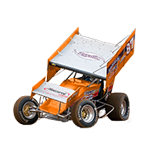 Adobe Community
Adobe Community
Copy link to clipboard
Copied
Hi all,
After years of working with Quark I've decided to try InDesign. Now using a friend's old version (CS4) to see how they compare before committing.
However, in testing a few things out I've hit a problem of sorts. I've an A5 document with facing pages. I've decided to have the occasional photograph/illustration fill the entire page, so a page of text would then have a facing page with a full-page photo. I've then put a 3mm bleed guide around the page.
However, when checking the completed PDF I can see an unsightly white bleed or strip running up the spine/gutter of the page with the picture. Also, I see a bit of the picture bleeding onto the facing page with the text.
I thought this was a mistake I was committing but it now seems normal. The trick is to "Break the pages apart": https://indesignsecrets.com/breaking-pages-apart-to-bleed-off-a-spine.php
Following the advice in the link it works perfectly. However, bearing in mind that I provide the PDF to the printer and remain unsure about how deep the binding will be, this seems to be an odd method of working. Yes, these irritating strips should be hidden by the binding, but what if they're not? Do most people, when taking into account a photo going right to the end of the spine/gutter, simply do the above and break the pages? Or do they enter a Custom Size and make the page slightly bigger to take the spine into account?
If this is a common theme, apologies for the repetition, but I'm very much a noobie here and trying to learn good working practices from the beginning.
Best,
Ray
[Moved from the Lounge (which is where you can "connect with your peers" from across all of Adobe's products for conversations that don't directly relate to help and support) to a product-specific support forum by a moderator.]
 1 Correct answer
1 Correct answer
Stop using Inside bleed and while you’re at it, stop using your friend’s software.
Copy link to clipboard
Copied
Stop using Inside bleed and while you’re at it, stop using your friend’s software.
Copy link to clipboard
Copied
"Stop using the inside bleed". Looks good as a PDF and addresses the issues, but still wondering about how this would work if printed. I know how to fix the problem, I was just wondering if the "Allow document pages to shuffle" option selected to "off" was the standard procedure if printing a full-page illustration.
As for my friend's copy of ID, I'm comparing it with Quark before committing to the CC purchase--I happen to have a small book project on the go so I'm trying to kill two birds with one stone. Quark was a trial with so many issues. Now seeing how ID operates. Pleasantly surprised.
Best,
R
Copy link to clipboard
Copied
RayWilliam1970 wrote
"Stop using the inside bleed". Looks good as a PDF and addresses the issues, but still wondering about how this would work if printed.
Depends on the binding method. Don't use inside bleed for perfect bind, saddle stitch, or any method where the spread is printed across sheets. Do use inside bleed (and arguably, non-facing pages) for a method like spiral or comb binding, where each page is printed discretely.
Copy link to clipboard
Copied
Yes. The client's waiting till the last minute before deciding on how to bind the booklet. As I'll be supplying the visual material too, I'm looking at an ID layout that will leave me with as many options open till I send the project to the printer.
All of my past work--and, really, I'm a photographer, but I've been roped into designing the layout regardless--has been fairly simple and didn't require a photo encroaching on the gutter/spine. My own feeling, considering the 1,000s of booklets that'll be printed, is that the budget will play a big role and "saddle stitching" will probably be the preferred option. So it looks like eliminating the Inside Bleed (and using the "Allow Document Pages to Shuffle" option for the future) is the best way to go?
Best,
Ray
Copy link to clipboard
Copied
So it looks like eliminating the Inside Bleed (and using the "Allow Document Pages to Shuffle" option for the future) is the best way to go?
Ask the printer. Some printers want the inside bleed for consistency in their imposition, but the content of the bleed doesn't matter because it will be removed when the pages are imposed. The inside edge isn't trimmed, it's folded.
The InDesign Secrets article has caused a lot of confusion, because you would only need to split pages when the inside edge is trimmed and exposed, i.e., wire-o.
Copy link to clipboard
Copied
Thanks for the link. Wish I'd seen it 2 days ago.
Copy link to clipboard
Copied
That's not how this generally works. Knowing how something is going to be printed, is not a minor detail.
Copy link to clipboard
Copied
Certainly. Having written a couple of books and a few exhibition catalogues I realise the importance of the binding process. Saddle stitching is what I'm working on and will convince the client, who is very demanding but indecisive too. A wonderful combo.


